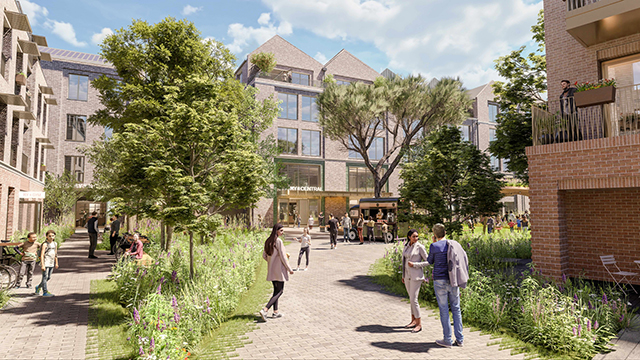The long-term effectiveness of the government’s new biodiversity net gain scheme for developers is at risk because of uncertainty about how rapidly the market for biodiversity units can scale up and whether enforcement by local authorities will be effective, the National Audit Office has warned.
The new policy, legislated for as part of the Environment Act 2021 and launched after some delay in February, aims to make sure developers in England protect or improve biodiversity on land they are developing.
But the independent public spending watchdog has raised concerns about whether Defra and Natural England have made good and effective progress in implementing the policy in a report published today (17 May).
Under the scheme, developers must improve the habitats they harm by a net 10%, ideally on-site. When on-site gains are not enough to meet the 10% requirement, off-site gains can be created by the developer elsewhere or purchased through a new private market for biodiversity units.
Defra is relying on a private sector market for biodiversity units emerging but does not know how rapidly it can scale up or satisfy demand, the NAO said. At the start of this month – 10 weeks after statutory BNG launched – there were just two gain sites on the new statutory biodiversity register, offering a total of 86 acres. In 2021, Defra estimated the annual size of the biodiversity units market to be between £135m and £274m.
Where private markets fail to provide enough off-site credits, Defra will step in as a provider of last resort, with the money raised ring-fenced for government mandated improvements to UK biodiversity. However, the NAO said Defra does not yet have a legally compliant mechanism to spend income from statutory credit sales to enhance biodiversity.
BNG is being implemented in three stages: on major developments from February 2024; small developments from April 2024; and nationally significant developments from November 2025.
The NAO found that stakeholders were supportive but had concerns about the scheme’s implementation prior to launch, including uncertainty about the launch and preparation costs.
The government provided either £26,807 or £43,4674 to each local authority in 2023-24 to help them prepare. Local authorities had discretion to spend the money: for instance, on recruiting and training new ecologists, procuring new software, and processing legal work. However, Defra acknowledged mixed readiness among local authorities at launch.
The NAO warned that there are risks to local authorities carrying out effective compliance and enforcement for statutory BNG. Local authorities have discretion in how they enforce planning regulations. Defra did not give local authorities additional money specifically to monitor or enforce on-site gains. However, government expects that local authorities can also generate income from BNG legal agreements, which can fund monitoring and enforcement work.
Defra is still developing its governance arrangements for BNG and intends to make Natural England responsible for important elements of the policy. But in developing these new arrangements, Defra does not intend to provide central monitoring of how well on-and off-site biodiversity gains are being enforced by local authorities.
Natural England and Defra also lack all the relevant information they need to effectively evaluate the regime and determine whether it is a success, the NAO report says. They do not currently have a comprehensive source of information on habitat enhancement taking place on site, for example. Defra is exploring what information might be available from local authority reporting against the statutory biodiversity duty, but this would only be available at five-yearly intervals.
The report recommends that government establishes a mechanism for spending income from the sales of statutory biodiversity credits. It also says that local authorities should have sufficient and timely funding certainty to allow for longer-term planning regarding their role in locally agreeing and enforcing the scheme.
Gareth Davies, head of the NAO, said: “The statutory biodiversity net gain scheme is the first national scheme of its kind to build requirements for enhancing biodiversity into planning approval. However, it was launched with risks to the long-term effectiveness of the policy.
“These include uncertainty about whether the fledgling market for biodiversity units scales up to satisfy developers’ demand, risks to enforcement and gaps in its information.
“Defra must address these issues, including by plugging gaps in its information so that it can effectively evaluate the scheme’s success.”
Photo by Shutterstock
Send feedback to Julia Cahill
Follow Estates Gazette











